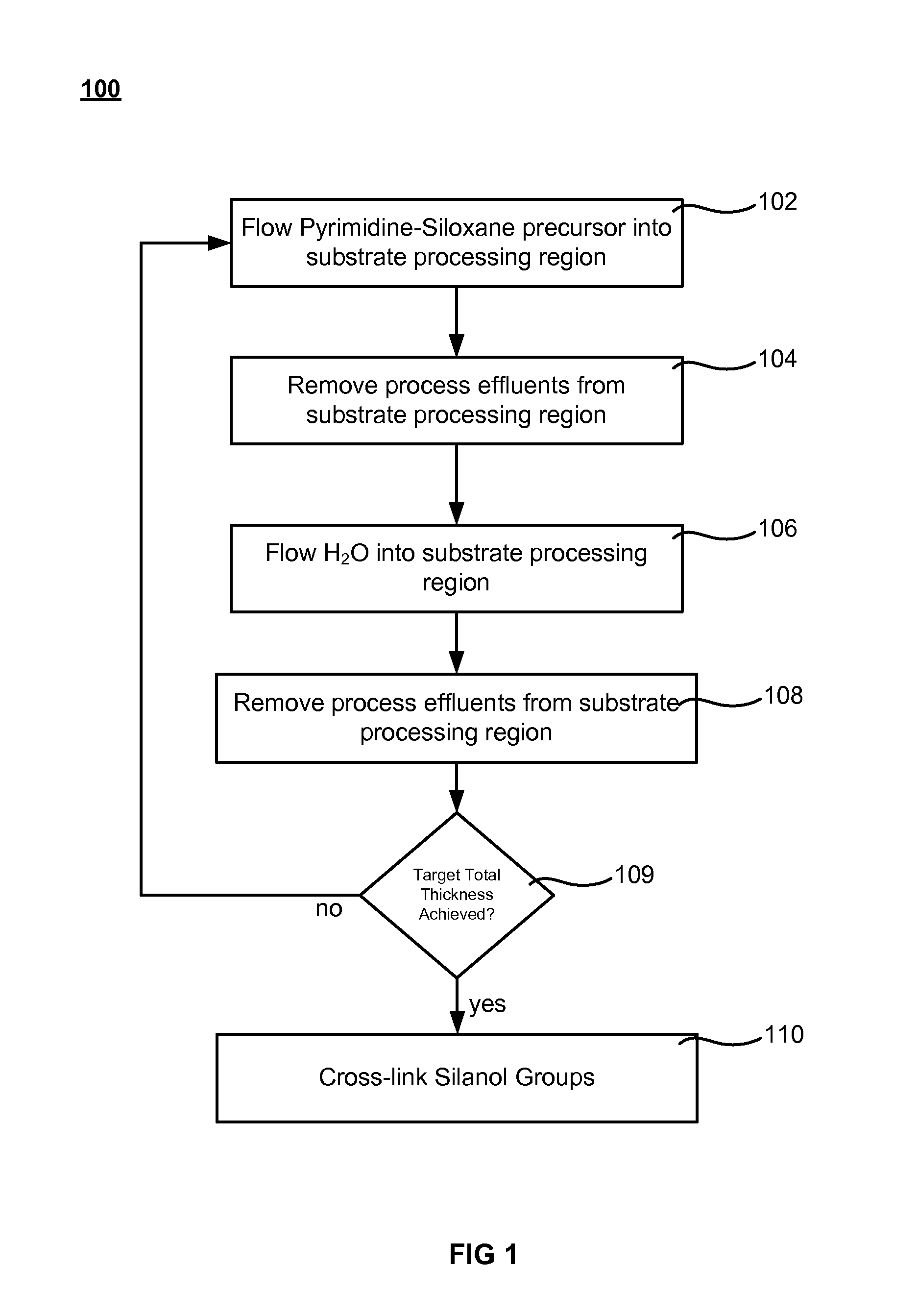Embedded catalyst for atomic layer deposition of silicon oxide
- Summary
- Abstract
- Description
- Claims
- Application Information
AI Technical Summary
Benefits of technology
Problems solved by technology
Method used
Image
Examples
Embodiment Construction
[0020]Catalyzed atomic layer deposition from a reduced number of precursors is described. A deposition precursor contains silicon, oxygen and a catalytic ligand. A hydroxyl-terminated substrate is exposed to the deposition precursor to form a silicon bridge bond between two surface-bound oxygens. The surface-bound oxygens were part of two surface-bound hydroxyl groups and the adsorption of the deposition precursor liberates the hydrogens. The silicon atom is also chemically-bound to one or two additional oxygen atoms which were already chemically-bound to the silicon within a same deposition precursor molecule. At least one of the additional oxygen atoms is further chemically-bound to the catalytic ligand either directly or by way of a hydrocarbon chain. Further exposure of the substrate to moisture (H2O) results in displacement of the additional oxygen which are replaced by hydroxyl groups from the moisture. The surface is again hydroxyl-terminated and the process may be repeated. ...
PUM
| Property | Measurement | Unit |
|---|---|---|
| Temperature | aaaaa | aaaaa |
| Time | aaaaa | aaaaa |
| Pressure | aaaaa | aaaaa |
Abstract
Description
Claims
Application Information
 Login to View More
Login to View More - R&D
- Intellectual Property
- Life Sciences
- Materials
- Tech Scout
- Unparalleled Data Quality
- Higher Quality Content
- 60% Fewer Hallucinations
Browse by: Latest US Patents, China's latest patents, Technical Efficacy Thesaurus, Application Domain, Technology Topic, Popular Technical Reports.
© 2025 PatSnap. All rights reserved.Legal|Privacy policy|Modern Slavery Act Transparency Statement|Sitemap|About US| Contact US: help@patsnap.com



